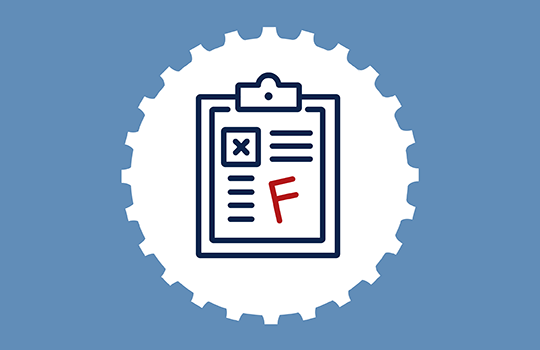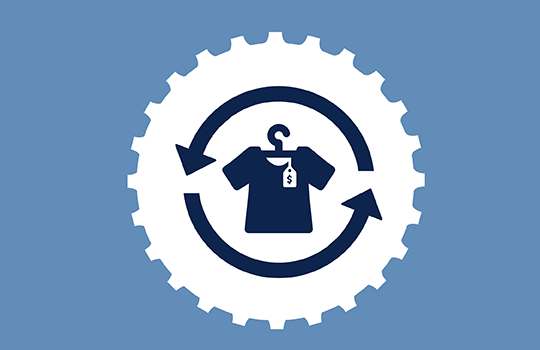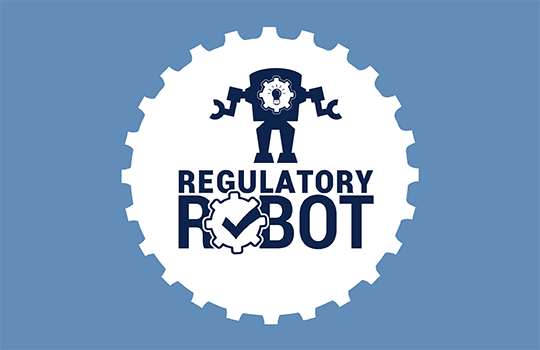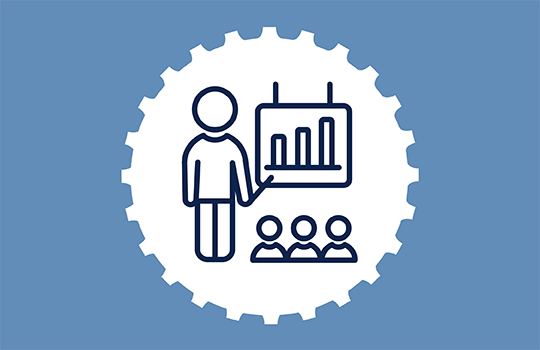
Quick Links
Consumer Products and E-Commerce

Are you a small business owner, handmaking products at home, like stuffed toys and clothing, to sell online? Are you a small importer or drop shipper, bringing into the United States, various kinds of products to sell in online platforms and marketplaces? Are you reselling secondhand goods in online thrift stores or on other third-party platforms? If you said yes to any one of those questions, then you’re in the right place.
The CPSC Online Sellers’ Safety Guide offers business owners various resources and information, including helpful FAQs, to help them make, import, or sell safe and compliant consumer products.

Common E-Commerce Safety Violations
Are you an e-commerce business selling consumer products online? Learn about some common e-commerce safety violations and how to avoid them.

Reseller’s Information Center
This information center is dedicated to helping resellers keep unsafe products out of the hands of consumers.

Subscribe to CPSC Safety Information Emails
Stay up to date on everything CPSC. Sign up to receive the latest safety recall information, as well as the periodic Business Education newsletter.

Regulatory Robot
Are you a small business with a new product? Start with our Regulatory Robot, designed to guide you through CPSC’s product safety requirements.

Small Business Education Videos
The Small Business Ombudsman has created several step-by-step videos to help walk you through certain CPSC safety requirements and product areas.

Business Education and Guidance
Making a toy? Importing clothing? Want to learn more about CPSIA requirements? Check out the Business Education page to find in depth information about different product areas and read more about common CPSC safety requirements.
Related Links
| Online Sellers Safety Guide FAQs |
|---|
|
A Children’s Product Certificate, or CPC, is a statement of compliance created and issued by a manufacturer or importer of a consumer product. It is not a document that you need to apply for, or register with, the CPSC to obtain. It is generally, though not always, a document that is created based upon passing test results from a CPSC-accepted, third party laboratory. You can read more information about CPCs here. Additionally, you may find our video series on CPCs helpful in navigating this requirement:
|
|
Certain small batch makers, who meet the legal qualification requirements, can register as a Small Batch Manufacturer to potentially receive relief from certain third party testing requirements, designated as “Group B” requirements. Visit Small Batch | CPSC.gov for more information about this program. You can start your registration process at Small Batch Manufacturers - SaferProducts. However, please note, a registered small batch manufacturer must always certify in a Children’s Product Certificate, or CPC, that its children's products are compliant with the underlying children's product safety rules applicable to each product. Note, the compliance requirements for small batch manufacturers are the same as the requirements for ordinary manufacturers: (1) you still need to comply, and (2) you still need to prove compliance. The major difference lies in how small batch manufacturers prove compliance. Sometimes, small batch manufacturers can prove compliance with a lower burden of proof than would ordinarily be required for non-small batch manufacturers. However, not all CPSC requirements allow special considerations for proving compliance: “Group A” requirements must always be met through third party testing at a CPSC-accepted laboratory.
|
|
The law defines a "children's product" as a consumer product designed or intended primarily for children 12 years of age or younger. In determining whether a consumer product is a children’s product, the following factors need to be considered:
General use products, on the other hand, are consumer products that are not designed or intended primarily for use by children 12 years of age or younger. Some products may be designed or intended for use by consumers of all ages, including children 12 years old or younger. Such products would be considered "general use products." If a consumer older than 12 years of age is as likely, or more likely, to interact with a product than a child 12 years of age or younger, then the product would probably be considered a general use product, depending upon how the product is viewed, using all four factors above. Products used by children 12 years of age or younger that have a declining appeal for teenagers are likely to be considered children's products. More information on this topic is available here: Children's Products | CPSC.gov.
|
|
We understand that the requirements can be complicated, and the thought of figuring out how to comply can be quite daunting. We're here to help steer you in the right direction. The best, first place to start learning about the applicable safety requirements for your product is CPSC’s free and easy Regulatory Robot tool: business.cpsc.gov. We've designed our Regulatory Robot to help you identify safety requirements that you should review before producing your consumer product. As most products are unique, each product may need to comply with different requirements, so you'll want to run the Robot one time for each different kind of product. The Regulatory Robot asks you a series of simple questions to provide you with the basic guidance you need to move forward with your design and manufacturing process. Once you’ve had a chance to review the material provided in your customized Regulatory Robot report, please feel free to contact us with additional questions about how to make a safe and compliant consumer product.
|
|
Most children’s products need to be retested every 12 months, whether any changes were made to the product. Following periodic testing, you will need to reissue your Children’s Product Certificate or CPC. Additionally, if you make any material changes to your children's product, you are required to either retest the product, or retest the component part that was changed, to ensure continued compliance of the altered product. You must then issue a new Children's Product Certificate, based on the new passing test results. More information about testing and certification requirements can be found here: Testing & Certification | CPSC.gov.
|
|
Yes, manufacturers and importers of children’s products must maintain several different types of records for a minimum of 5 years, as specified in 16 CFR § 1107.26, including records related to the “sourcing of component parts.” Additionally, under 16 CFR part 1109, CPSC permits manufacturers and importers of children’s products to rely upon the test results or a certification from a component part supplier to comply with applicable CPSC safety requirements. More information about component part sourcing and testing, and how to exercise due care with product sourcing, can be found here: Component Part Testing & Small Entity Compliance Guide | CPSC.gov.
|
|
As a reseller, you are not required to issue a CPC, but retailers can choose to set safety requirements for the products allowed on its platform that are more stringent than the applicable federal requirements. You can directly contact your suppliers or the importers/manufacturers themselves to ask for the certification they may have for the product. However, they are not required to provide the certificate to you. Ultimately, if the supplier or importer/manufacturer does not provide the CPC, you will need to have the product tested at a CPSC-accepted third party laboratory and create and issue your own CPC.
|
|
The CPSC does not have any licensing requirements for manufacturers, importers, and resellers of consumers products. Additionally, resellers and secondhand sellers do not need to test and certify the products they are reselling. However, resellers should closely examine the products they are planning to resell to make sure the products are safe and have not been the subject of a product safety recall. It’s important to know that it is illegal to sell any recalled product. For more information on how to safely resell your products online, please visit our Resale Information Center.
|
|
Whether the online platform accepts or rejects your Children’s Product Certificate or CPC is a business-to-business issue that you must resolve directly with them. CPSC cannot get involved in that kind of dispute. CPSC does not provide pre-market approvals of products. CPSC sets and administers basic federal standards and requirements for the safety of consumer products. Retailers, however, can choose to set safety requirements for the products allowed on its platform that are more stringent than the applicable federal requirements. In fact, many retailers have internal safety compliance programs that go above and beyond the basic federal requirements, and vendors/suppliers who want to sell with these retailers need to adhere to their compliance programs.
|
|
The importer of the product must certify it as compliant in a Children’s Product Certificate or CPC for products manufactured overseas. This means that an importer cannot simply pass along a foreign manufacturer's CPC; rather, the importer must issue their own certificate. However, the component part testing regulation, at 16 CFR part 1109, allows importers to use a foreign manufacturer's test results to issue their own CPC, as long as the importer exercises due care to ensure the validity of the test results.
|
|
The importer or business entity issuing the Children’s Product Certificate (CPC), or General Certificate of Conformity (GCC) does not need to be located physically within the United States; nor do they need to list a U.S.-based address to comply with sections 3 and 4 of their CPC or GCC. |
|
As required by law, the CPSC maintains a list of all third party testing laboratories that have been accepted and accredited to assess the compliance of consumer products to applicable safety rules and requirements. You can search for a CPSC-accepted laboratory here: https://cpsc.gov/labsearch. Additionally, this short, 5-minute video explains how to use the search page to find a laboratory to fit your third party testing needs: Lab Search Demonstration - YouTube. |
|
Passing testing reports do not satisfy the CPC requirements of 16 CFR part 1110. The passing test report from a CPSC-accepted, third party laboratory serves as the foundation for the creation of the CPC, but it is not the CPC itself. You must issue the CPC as a separate, standalone document to demonstrate your product’s compliance with applicable CPSC product safety requirements. See more information here.
|
|
The CPSC cannot advise you on potentially applicable U.S. state requirements that may be applicable to your consumer product. However, many states do have additional requirements for consumer products, above and beyond the base U.S. federal requirements. Our best suggestion would be to contact the State Attorney General’s Office for the U.S. state you are curious about: State Attorneys General | USAGov. |
|
You will need to contact the individual country or foreign jurisdiction you’re interested in for information about what safety requirements they require for your products. Many other countries and foreign jurisdictions have their own product safety requirements.
|
|
The CPSC values your product safety feedback. If you have reason to believe that a competitor product available in the marketplace is noncompliant with CPSC rules or otherwise unsafe for consumers, you can submit information explaining the nature of your concerns to section15@cpsc.gov. If you would like to report such information to the CPSC anonymously, please submit your concerns through this contact form. Please note, consumers should always report dangerous products to https://www.saferproducts.gov/. We are a small federal agency, and we depend upon reports from the public, including members of the business community, to help us monitor the marketplace for potentially unsafe and dangerous consumer products. |
|
Consumer products that are imported only as samples—and are not intended for distribution into U.S. interstate commerce or otherwise to be used by U.S. consumers—do not need to comply with CPSC product safety requirements. Importers of “sample-only” products may be subject to review by CPSC staff upon the product’s entry into the United States and must be able to demonstrate that the “sample-only” products will not be distributed to or used by consumers at any time. CPSC strongly suggests that importers provide (1) accompanying documentation showing the product’s ultimate disposition and/or (2) mark the products in such a way that makes them unsuitable for sale or distribution to consumers. Ultimately, the importer is responsible for ensuring that the product does not end up in U.S. interstate commerce. CBP has published guidance on the importation of commercial samples that may be helpful for importers. Importers should work closely with their licensed customs broker who can provide expert guidance on these import procedures. CPSC recommends that importers who import products for soliciting orders use Option I or II from the CBP guidance. Those options have multiple HTS codes to indicate the product is “sample-only” for soliciting orders. Importers who import products for testing should use Option IV. Those samples would be considered prototypes and should only use the HTS code 9817.85.01: prototypes to be used exclusively for development, testing, product evaluation, or quality control purposes. Again, in no circumstance may non-compliant samples be sold or distributed to U.S. consumers. |
